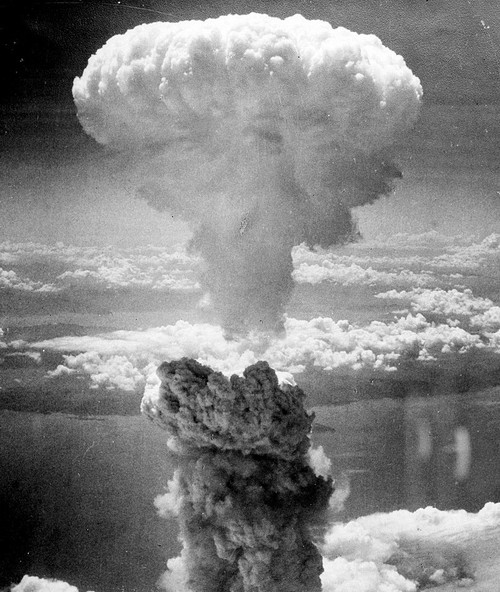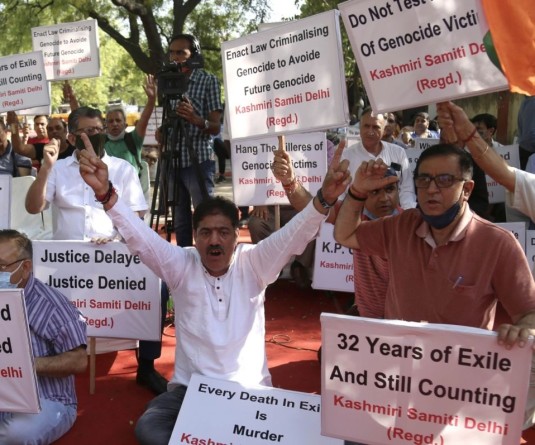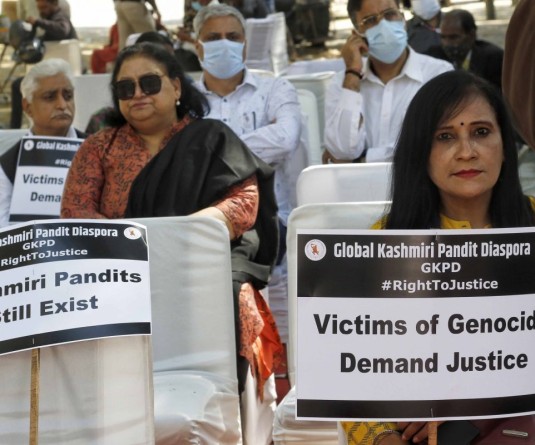IANS Photo

London, July 30 (IANS) Officials in Los Alamos thought that the people in Hiroshima and Nagasaki would be in their bomb shelters when the atom bombs were dropped, says the foremost historian of the Manhattan Project, and author of the Pulitzer Prize-winning 1986 book, 'The Making of the Atomic Bomb'.
In an interview with 'Nature', the premier science journal, Richard Rhodes points out that the estimates of these officials of the number of deaths were much lower than the actual number (the August 6 and 9, 1945, bombings are said to have caused anywhere between 1,29,000 and 2,26,000 deaths.
The reason the US officials thought the way they did was because the Japanese were always going to the bomb shelters whenever they heard a fleet of B-29 airplanes coming. "But when there were only one or two B-29s [the case when the atomic bombs were dropped], they just assumed the planes were there to check out the weather," Rhodes told 'Nature'. "They did not go to the shelters, and therefore many more were killed by the firestorm that followed than would have died otherwise."
Since the Christopher Nolan film's release, the scientific world, says 'Nature', has been abuzz about the accuracy of 'Oppenheimer' -- and whether it does justice to the many facets of the story of the atomic bomb. It approached Rhodes therefore to verify the accuracy of the narrative.
Another interesting insight shared by Rhodes is that no one thought Oppenheimer was the right choice -- except General Leslie Groves of the U.S. Army Corps of Engineers, played by Matt Damon in Christopher Nolan's biopic.
"Oppenheimer didn't have a Nobel Prize; he was terrible in the laboratories. But whenever Groves had a question that he needed an answer to, he would ask Oppenheimer. So Oppenheimer cultivated him, and in that sense, perhaps recruited himself for the job," observes Rhodes.
The historian goes on to also make it clear that "Oppenheimer was indeed a loyal American citizen; he understood the horror of Nazi Germany". The physicist had even "used some of his considerable wealth in part to get Jewish people out of Nazi Germany and Austria and bring them to the United States".
Rhodes also gives Groves, who, incidentally, also oversaw the construction of the Pentagon, the entire credit for making the bomb happen.
"Everyone thinks Oppenheimer led the Manhattan Project. He did not, of course: he led the Los Alamos Laboratory," Rhodes says. (Other major facilities in Oak Ridge, Tennessee, and Hanford, Washington, according to 'Nature', produced plutonium and enriched uranium as part of the sprawling effort, but these aren't a focus of the film.)
"I don't know whether it could or couldn't have been done without Oppenheimer," continues Rhodes. "But it certainly could not have even remotely happened without Groves. Groves operated on a scale that just defies imagination. And in doing so, and in constantly and relentlessly pushing everybody to get the job done, he made it happen."
Finally, Rhodes points out to 'Nature' that it was the involvement of the U.S. Air Force, other than the personal animus that (U.S. Atomic Energy Commission member) Lewis Strauss had against him, that led to the downfall of Oppenheimer. The physicist opposed the hydrogen bomb, the U.S. Air Force wanted it at any cost.
"Oppenheimer thought that this huge hydrogen weapon, with its potential for megatons and megatons of yield, was a travesty, as there was no legitimate military target for such a weapon," Rhodes says in his interview to 'Nature'.
"It was basically and purely a weapon of mass destruction. So, the Air Force wanted to get him out of the way [to develop it], and it was a significant part of the attempt to destroy Oppenheimer."






